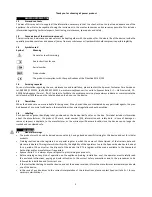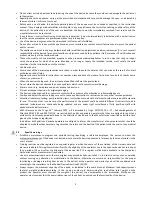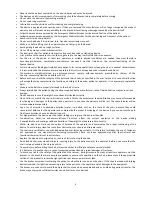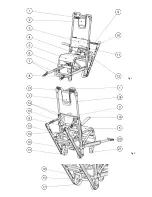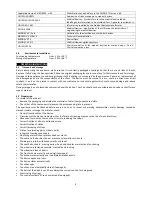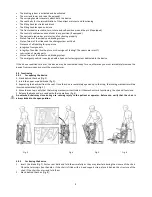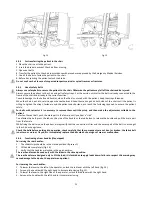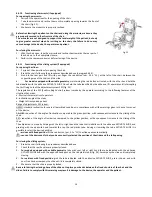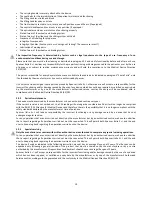
4
Never leave the patient unassisted on the device, because he may be injured.
The device and all its components, after washing, should be allowed to dry completely before storing.
Do not wash the device in the washing machine.
Do not use drying machines.
Lubrication must be carried out after cleaning and complete drying.
The device is equipped with security seals, if they are removed the manufacturer will no longer recognize the product
warranty and will accept no responsibility for the improper functioning or damages caused by the device itself.
Follow the procedures approved by the Emergency Medical Services for the immobilization of the patient.
Follow the procedures approved by the Emergency Medical Services for the positioning and transport of the patient.
Avoid contact with sharp objects.
Do not use the device if it is pierced, torn, frayed or excessively worn out.
Make sure, before lifting, that the operators have a firm grip on the device.
Avoid pulling the device on rough surfaces.
Do not lift by crane or other mechanical lifts.
The device is a chair for patients transport and cannot be used as a stationing device.
First practice with an empty chair in order to get used to the way in which the chair manoeuvres.
For the use of the device, at least two operators in suitable physical conditions are needed; they must therefore
have strength, balance, coordination, and common sense and must be trained on the correct functioning of the
Spencer device.
For techniques for loading particularly heavy patients, for rescue operations on steep ground or in unusual circumstances,
it is recommended the presence of more operators (not just two as required under standard conditions).
The maximum weight sustained by each rescuer must comply with requirements prescribed by the law of the
Country, concerning Health and Safety at Work.
Before each use, check the integrity of the belts and their hooks, as specified in the user’s manual. In case of malfunction
or damage that may compromise the function and safety of the device, patient or operator, it is necessary to replace the
belts.
Make sure the belts are properly fastened to the chair’s frame.
Always immobilize the patient, using the straps supplied by the manufacturer; lack of immobilization may cause serious
damage.
Do not operate in case the weight has not been distributed correctly.
Do not alter or modify the chair arbitrarily to make it fit into the ambulance: the modification may cause unforeseeable
functioning and damages to the patient and operators. In any case the warranty will be lost. The manufacturer will no
more considered responsible.
Pay a lot of attention to possible obstacles (water, ice, debris, etc.) on the route of the chair, because they could
cause loss of balance for the operator and compromise the proper functioning of the device. If you can not set the path
free from obstacles, choose an alternative path.
For high gradients, the device must be raised, taking care to grasp the transport handles.
Condensation, water, ice and accumulations of dust can affect the correct operation of the device, making
it unpredictable and causing a sudden alteration of the weight that operators have to carry.
Water, ice, debris on stairs can cause loss of balance of the operator and compromise the proper functioning of the
device. To avoid injury clean the route from obstructions or choose an alternate route.
The chairs are certified for use with dedicated Spencer fastening systems, it is therefore forbidden the use of fasteners
not approved by the manufacturer. Fastening systems that have not been approved may alter the structural and
functional characteristics of the stretchers.
Replace the wheels with original parts, in case of failure to stop the device.
An unlocked chair may close during use, causing injury to the patient and/or the operator. Before use ensure that the
chair is always locked in the closed position.
To avoid injury, before lifting the chair, always check that the lifting handles are securely locked.
It 's better not to use the chair in case of suspected cervical traumas, spinal damages or fractures.
To avoid any risk for the safety of the patient and the rescuer, during transport on stairs at least two operators must be
present. In the event that more people are needed to ensure safe operation on the chair, please consult the appropriate
section of this manual to locate the right position that every operator must take.
Use the brakes only when transferring the patient or when there is no one on the chair. If the chair is moved with locking
devices inserted, it might tip over causing injury to the patient or the operator and/or damages to the equipment.
The brakes are used only to avoid the empty chair to move when unsupervised and as an aid during patient transfer. The
brake may not provide sufficient resistance on all surfaces or under load.
Содержание EVA
Страница 6: ...6 Fig 1 Fig 2 ...


